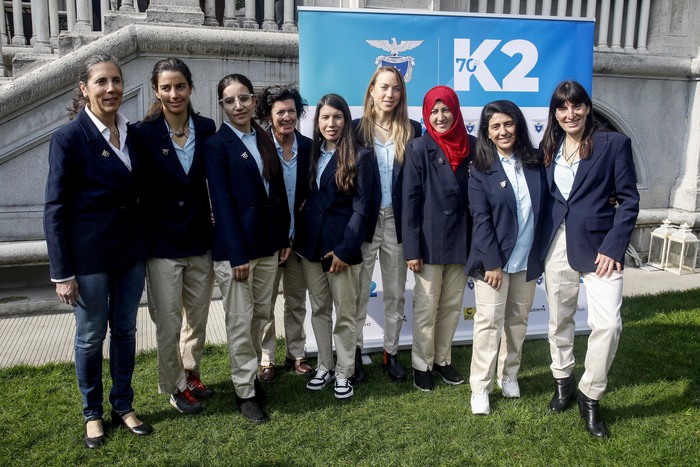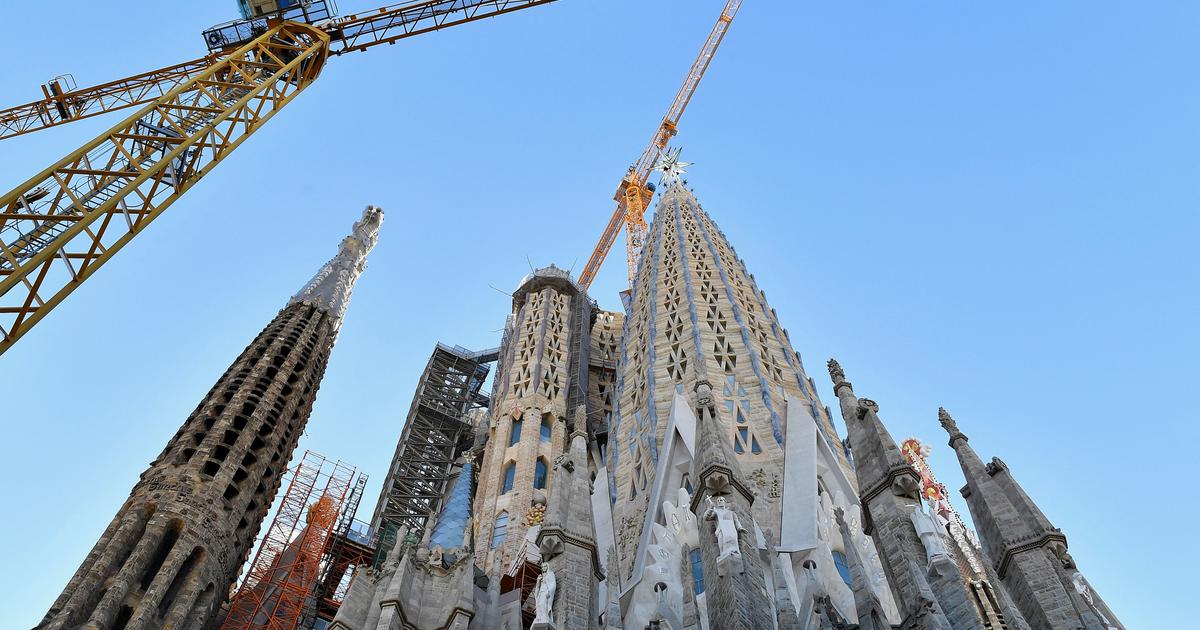Image of the K2.
The conquest of K2 (8,611 m) in winter has notably accelerated an evident trend: Nepalese, and especially their Sherpa ethnic group, have become the kings of the highest peaks on the planet and the owners of the business generated around the tourism of the eight thousand.
After winning the last, elusive and desired 8,000-meter peak that had yet to be overcome in winter, Nepal is chestnuts not for what they have been (facilitators of Western successes) but for what they are: unbeatable on their pitch and prepared to financially exploit their gift.
Live from tourists and not for them.
Its coup has practically silenced the grimaces of disgust of the best mountaineers, of the most ethical or of those who can rightly say that there are forms of conquest that are more beautiful and typical of the century in which we live.
Mountaineering has always grown from technical improvements but, above all, from daring: raising the limits of the possible while leaving the unthinkable far away.
And to despise this possibility arguing that the end justifies the means is an insult to the history of mountaineering.
More information
Nirmal Purja's big surprise
Hope is consumed in K2
The conquest of the K2 in winter has taken place from a classical approach, in Himalayan terms, but absolutely new in terms of marketing projections.
On the one hand, 70 mountaineers were cited at the foot of the mountain, never seen before in the history of wintering, which started in 1980 with the Polish summit on Everest.
It should be remembered that the Poles recruited several Sherpas and that one of them was close to reaching the top days before Wielecki and Cichy did.
In terms of style, the panorama of last December referred to the first expeditions or explorations of the thirties of the last century: many candidates, industrial quantities of material, kilometers of fixed rope, hundreds of oxygen cylinders, high altitude fields ... top from the siege.
Although spread over different expeditions, some huge, others minimal, at the moment of truth all the groups mixed to work on the route and unite by natural selection.
Here, of course, the 10 Nepalese who reached the top on 16 January won by a landslide, hand in hand and singing.
If someone, even without acclimatizing properly, could take advantage of a favorable weather forecast, without wind and with a clear sky, it was them.
Out there, their effectiveness has been overwhelming, even if they traveled with bottled oxygen.
If his success on the mountain is anything but avant-garde, his commercial return is overwhelming.
Playing in a foreign field (Nepal contemplates nine of the 14 eight-thousand and Pakistan five), the Nepalese clearly announce their intention to recreate Everest in K2, that is, to expand the market.
The most important expedition in terms of number of troops has been that of Seven Summits, founded and directed by Sherpas who have not placed any of their clients at the top or close to it, but who have achieved that their brand reaches levels of recognition unthinkable ago just a few months.
Like an island with its own light, almost a lighthouse, the figure of Nirmal Purja, who stands out above his Nepalese compatriots, stealing the scene from the Sherpas: he is the only one in the photo from the top of K2 who does not belong to the most ethnic group. famous in the country (ignoring the Gurkish soldiers) but right now there is no one better known in the world of Himalayas, something unthinkable for someone who left the special forces of the British army to put on crampons for the first time in 2012. If Purja was lack of pedigree, he has plenty of arguments to get his chest out: the fastest to climb the 14 eight-thousandths, the first without oxygen in the winter K2, his effectiveness ugly all the excuses for not reaching the roofs of the planet: not the altitude, the cold, the dangers, storms or the time of year have slowed their bets, challenges that now fly faster and away from the hand of their sponsor, Red Bull.
From his pedestal, he has been quick to censure those who reproach him for his lack of mountain culture, his voracity or the fact that he does not pay attention to details of ethics or style.
Nirmal asks that they not judge him, that they leave him alone in a space of freedom such as the mountains, but here he can be reproached for a lack of respect bordering on the insolent when it comes to understanding the essence of mountaineering, its evolution and its search permanent improvement, commitment, minimalism or respect for the environment.
No, Purja has not invented Himalayanism;
if anything you've put the eight-thousand difficulty on the scale it deserves: far from the cutting-edge ascents pursued by mountaineers who will never meet global fame or sponsorship.
Me and my entire team are beyond happy and humbled to have received such a pleasant warm welcome on arrival at Skardu and Islamabad.
We are overjoyed with emotions and our hearts are full of gratitude.
Many thank you to all our Pakistani family for making us feel at home.
1/4 pic.twitter.com/sU1dR7cqfx
- Nirmal Purja MBE (@nimsdai) January 23, 2021
The events of K2 do not escape the sign of the times and the derived news has often grown from falsehood, if not from the invention orchestrated on social networks.
Mass media in Pakistan chose false Twitter accounts of Ali Sapdara to announce that he had reached the top when in fact he was missing and today he is presumed dead, along with his two companions, the Icelandic John Snorri and the Chilean Juan Pablo Mohr.
The conquest of K2 in winter leaves five deaths, a constant in the history of a mountain better known for its tragedies than for its happy episodes.
One in four people who step on its summit disappears on the descent.
Sergi Mingote suffered a fatal fall while descending towards base camp.
It was the same day that Purja and his nine companions sneaked to the top.
The next window of good weather came last week and on Friday the 5th the Bulgarian Atanas Skatov died abandoning his attack to the top after suffering a mishap on the fixed ropes.
Around the same time, Sajid Ali said goodbye to his father, Ali Sapdara, a national hero with enormous experience at height.
Sajid gave up the summit at 8,200 meters because his artificial oxygen regulator was not working properly.
The last time he looked towards the summit, his father, his client John Snorri (Iceland) and the Chilean Juan Pablo Mohr were walking determined towards the summit.
No one has seen them since.
You will never know what happened to them, but among the many questions that remain unanswered, some point to the limits of driving in extreme altitudes and conditions.
Once the cycle of conquering the eight-thousand in winter, a task that has spanned four decades, has been completed, it is worth asking what future awaits this Himalayan activity: will it fall into oblivion?
Will it seduce new generations of climbers who want to improve what they have achieved to date?
There is room for exploits, as surely as new painful episodes are expected.

/cloudfront-eu-central-1.images.arcpublishing.com/prisa/LO7U6OB4GH5XZ45SQGNA26SY7E.jpg)







